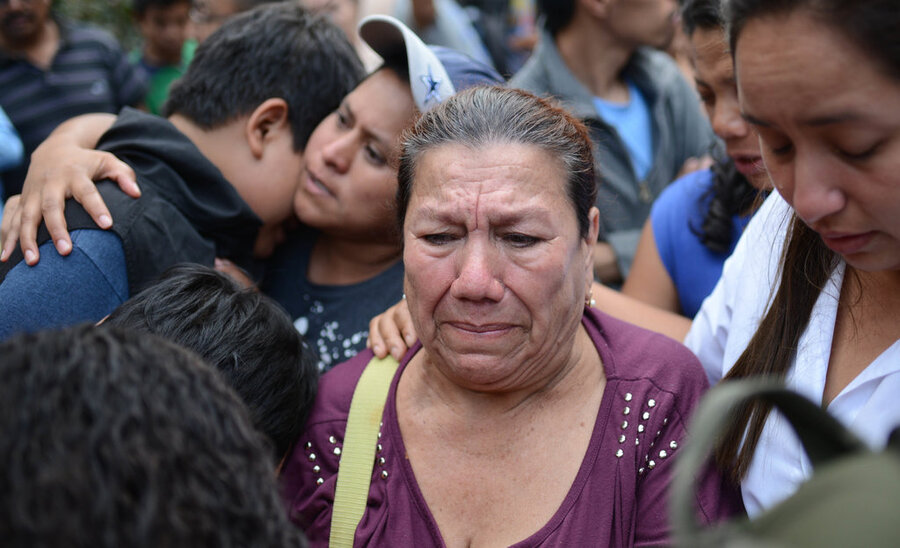Mudslide leaves 26 dead in Guatemala City
Loading...
| GUATEMALA CITY
Homemaker Dulce del Carmen Lavarenzo Pu had just returned from church when the ground shook and she heard a terrible noise. A wave of mud slid from the nearby mountainside and buried everything just 150 feet (50 meters) from her house.
"Everything went black, because the lights went out," said the 28-year-old of the mudslide that struck Thursday night in her neighborhood on the outskirts of Guatemala City. "Ash and dust were falling, so we left the house. You couldn't see anything."
The rain-sodden hillside about 300 feet (100 meters) high had collapsed onto her neighborhood, killing at least 26 people, including the cousin of Lavarenzo Pu. She burst into tears upon seeing the body of her cousin brought into the morgue on Friday. Some 36 people were injured.
The number of dead was expected to rise with family members reporting 100 people missing. The number of missing could be as high as 600 based on at least 100 homes in the area of the slide, said Alejandro Maldonado, executive secretary of Conred, Guatemala's emergency disaster agency.
Search efforts were scheduled to resume on Saturday.
Hundreds of rescue workers used shovels, pickaxes, dogs and backhoes in a frantic bid to reach survivors Friday, pulling one man alive from the rubble of his collapsed home more than 15 hours after the landslide hit. They had to call off the search late Friday until Saturday morning for workers' security because they were getting tired and it was starting to rain, authorities said.
Julio Sanchez, spokesman for Guatemala's volunteer firefighters, said the dead, including two babies, were carried to an improvised morgue where weeping relatives identified the bodies of their loved ones. The dead included Quani Bonilla, 18, who played on the national squash team, he said.
Also among the bodies, rescuers found a mother embracing her two girls, said Carlos Turcios, a doctor who saw them when he came to help the rescue.
The hill that towers over Cambray, a neighborhood in the suburb of Santa Catarina Pinula, about 10 miles (15 kilometers) east of Guatemala City, partly collapsed onto a 200-foot (60-meter) stretch of the hamlet just before midnight, burying an estimated 68 homes. Raul Rodas, an assistant village mayor, said about 150 families had lived in the area where the mudslide occurred.
Some of the untouched homes in Cambray, which sits on the edge of a small river, were abandoned by their owners for fear of further mudslides.
Early in the day, Marleni Pu, 25, stood at the edge of the mudslide, her face swollen with weeping.
"My uncles, my cousins, my nieces and nephews are all there," she said, looking across the field of debris where about two dozen relatives had lived. "Six houses where my relatives lived are all under the hillside now."
Searchers dug out her relative, Rony Ramos, 23, who was rescued from a home near the edge of mudflow. But at its center, the landslide buried houses under a layer of rocks and earth as much as 50 feet (15 meters) deep. He had apparently been trapped in an air pocket, face down and unable to move. Authorities originally identified him as Ronny Pu.
"When our personnel were searching through the rubble, they heard a voice," said rescue worker Cecilio Chacaj. "They located the man, who was buried about two meters (six feet) under rubble."
He said rescuers worked frantically for five hours with jackhammers and saws to free Ramos.
All day, restaurants brought pizza, hamburgers, coffee and bottle water for the workers, who took 30-minute shifts searching through the mud with the help of generators and overhead lights. By afternoon, some were so tired they were seen taking naps on the floor.
Relatives waited for any word of the missing.
The municipal government said it would provide coffins for the victims.







